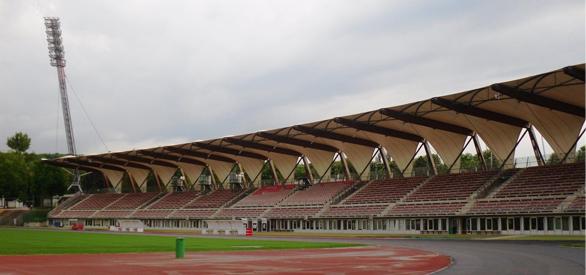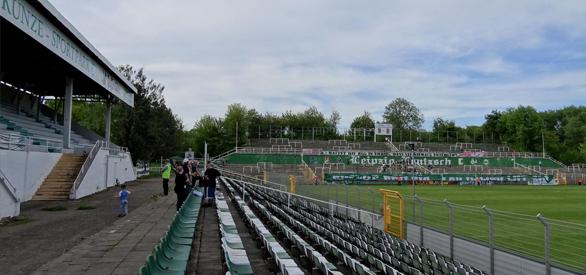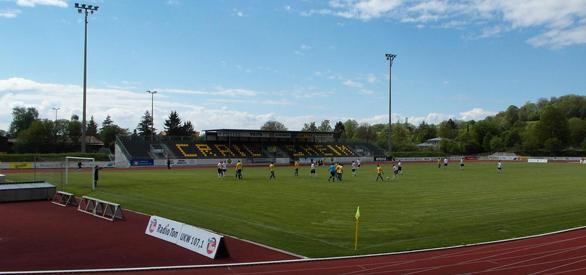New stadiums: Erfurt, Leipzig and Crailsheim
source: StadiumDB.com; author: StadiumDB.com team
 One of them had potatoes growing after WWII on the field. Another has a stone football team standing among fans and is basically the encyclopedia of football in Leipzig. While the last one sees a folk festival take place regularly...
One of them had potatoes growing after WWII on the field. Another has a stone football team standing among fans and is basically the encyclopedia of football in Leipzig. While the last one sees a folk festival take place regularly...
Advertisement
Steigerwaldstadion

The decision to build a new sports complex in southern Erfurt, near the Steiger Forest, was made in 1927. By May 1931 the ground was ready and to be able to hold its first international game in August (Germany – Romania) it also received a wooden main grandstand atop land embankments. Altogether capacity stood at 35,000 people of whom 1,270 could be seated in the wooden section.
The ground's promising history suffered a setback as WWII ended and Soviet armed forces took over. For some time it was even used to grow potatoes on the pitch, being revitalised in 1948. Also renamed for the occasion, the stadium was reopened to honour Bulgarian communist Georgij Dimitrov. Early years of the DDR league brought sensation as local club Turbine became vice-champions already in 1951. The final game against champions Chemie Leipzig was seen by nearly 50,000 people!
In 1970 the first floodlit game was held here, but the 1,000 lux lighting lasted only until 1990s. In 1999 new masts were to be inaugurated, but one day before reopening one of them literally broke and its upper part crashed onto the stands. Afterwards a deadlock occurred that saw the next nighttime game no sooner than in 2003.
Before that the stadium was renamed again as Germany reunited. In 1991 public vote saw it take a more neutral name of Steigerwaldstadion, one taking from its location. One more major change came with Germany's new reality, the main grandstand was rebuilt with seating and impressive canopy roof based on wooden structure.
Alfred-Kunze-Sportpark

Its construction began in 1919 and gave Leipzig a new stadium in the western district of Leutsch a year later. Simple structure with a sunken pitch and terracing created below ground level became the home of Leipzig's most important clubs, beginning with Jahn in 1920s (when the 2-storey clubhouse was built), Tura, SG, Industrie, Lokomotive, Sachsen and Chemie, two of which have been reactivated and hold their games here to this day.
The terraces able to hold 20,000 were sometimes filled to capacity in 1930s, but the stadium's hayday came in 1960s, when Chemie reached for their DDR championship (1964) and DDR Cup (1967), cheered by crowds reported to be at 27,000.
Alfred Kunze was the team's coach at that time and his reign was the best time for Chemie, seeing him honoured by stadium patronage in 1992. Kunze came as the stadium's second patron, following Georg Schwarz, an anti-Nazi oppositionist murdered in 1945.
With local football collapsing completely after Germany's reunification, barely any investment was carried out in Leutsch. It wasn't until 2009 that the wooden upper deck of the ground's west side was repainted and seats were installed in lower rows.
Schönebürgstadion

Built in 1976, the stadium in north-eastern Crailsheim didn't see any football until June 1977. It was then that official football opening took place with the selection of Crailsheim players facing the Stuttgarter Kickers.
Initially with only the eastern terrace, the stadium went through expansion in 2012 and received a new tubular stand in the west, fully seated and partly covered.
Multi-section sports club TSV Crailsheim is the anchor tenant of the stadium, although various non-sporting events also take place here, like parades of part of the folk festival taking held in the town.
Advertisement

 StadiumDB
StadiumDB